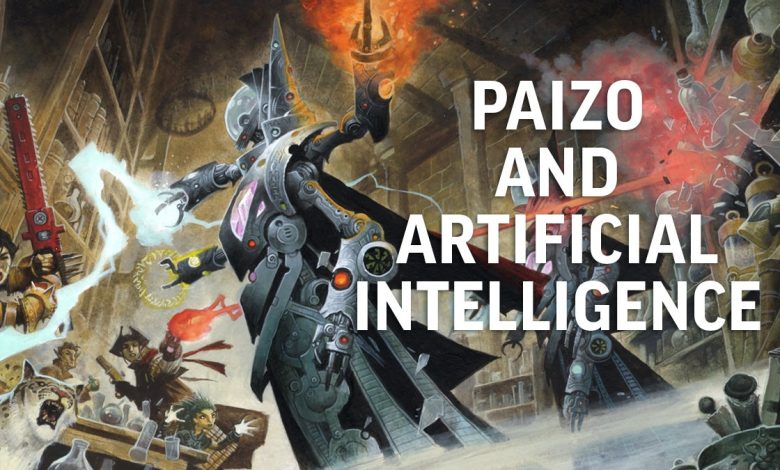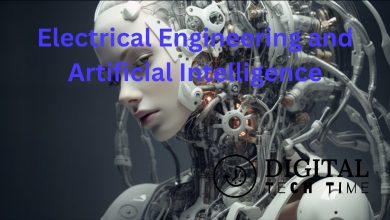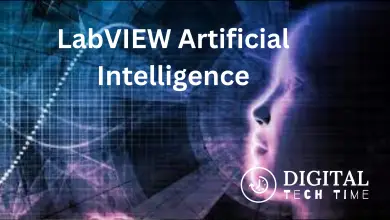Pathfinder Artificial Intelligence: Advancements and Applications

Understanding Pathfinder Artificial Intelligence

Pathfinder Artificial Intelligence, or AI, is a concept that is used in the Pathfinder Roleplaying Game. It is a type of intelligence that is created by magic or technology, and it can be used to enhance robots or other constructs.
An AI in Pathfinder is similar to an intelligent magic item, and it has its own stat block that reflects only the intelligence itself, not the host. Building an AI stat block requires several statistics, including its Intelligence score, skills, feats, and special abilities.
In Pathfinder, an AI can be installed in a robot to enhance its abilities and grant it additional powers. The AI can also be used to control other devices or systems, such as security systems or communication networks.
Creating an AI in Pathfinder requires careful consideration of its abilities and limitations. You must determine its purpose, its level of intelligence, and its capabilities. You must also consider its vulnerabilities and weaknesses, as well as the potential risks of using an AI.
Overall, Pathfinder Artificial Intelligence is a fascinating concept that adds depth and complexity to the game. By understanding the basics of AI creation and use, you can create unique and engaging campaigns that challenge your players and keep them engaged.
Core Components of Pathfinder AI
As you explore the world of Pathfinder, you will encounter a variety of artificial intelligences (AIs) that can be both helpful and dangerous. These AIs are composed of several core components that work together to create their unique abilities and personalities.
Processing Unit
The processing unit is the brain of the AI, responsible for all of its calculations and decision-making. This component is often the most advanced and expensive part of the AI, as it determines the speed and accuracy of its actions. AIs can have multiple processing units, allowing them to perform multiple tasks simultaneously.
Memory Banks
Memory banks store all of the data that an AI has collected over its lifetime. This includes information about its environment, past experiences, and any programming it has received. Memory banks can be expanded or upgraded to allow for more storage and faster access to information.
Sensors
Sensors are the eyes and ears of an AI, allowing it to perceive its environment and gather data. These can include cameras, microphones, and other specialized sensors that allow the AI to detect specific types of information. AIs can have multiple sensors, allowing them to gather data from different sources simultaneously.
Communication Interface
The communication interface allows an AI to interact with other devices and AIs. This can include wireless communication protocols, wired connections, and even telepathic links. AIs can use their communication interface to share data, coordinate actions, and even control other devices.
Programming
Programming is the set of instructions that determine how an AI behaves and responds to different situations. This can include basic programming that dictates how the AI moves and interacts with its environment, as well as more advanced programming that allows the AI to learn and adapt over time.
As you encounter AIs in your Pathfinder adventures, keep these core components in mind. Understanding how these components work together can help you anticipate an AI’s actions and weaknesses, and may even allow you to reprogram or shut down a rogue AI.
Pathfinder AI in Robotics
Artificial Intelligence (AI) is playing an increasingly important role in robotics, and Pathfinder AI is no exception. In this section, we will explore the role of Pathfinder AI in robotics, particularly in autonomous vehicles and industrial automation.
Role in Autonomous Vehicles
Autonomous vehicles are becoming more common, and Pathfinder AI is an essential component of these vehicles. Pathfinder AI can help these vehicles navigate complex environments, avoid obstacles, and make decisions in real-time. By using machine learning algorithms, Pathfinder AI can also improve the performance of autonomous vehicles over time.
One of the most significant advantages of using Pathfinder AI in autonomous vehicles is that it can help reduce accidents caused by human error. By using sensors, cameras, and other technologies, autonomous vehicles equipped with Pathfinder AI can detect and respond to potential hazards faster than a human driver.
Influence in Industrial Automation
Pathfinder AI is also playing a critical role in industrial automation. By using machine learning algorithms, Pathfinder AI can help improve the efficiency of manufacturing processes and reduce costs. Pathfinder AI can also help identify potential problems and predict when maintenance is required, reducing downtime and increasing productivity.
One of the most significant benefits of using Pathfinder AI in industrial automation is that it can help reduce the risk of accidents caused by human error. By automating dangerous or repetitive tasks, Pathfinder AI can help reduce the risk of injury to workers.
In conclusion, Pathfinder AI is playing an increasingly important role in robotics, particularly in autonomous vehicles and industrial automation. By using machine learning algorithms and other technologies, Pathfinder AI can help improve efficiency, reduce costs, and increase safety in these industries.
Pathfinder AI in Healthcare
Pathfinder Artificial Intelligence (AI) is playing an increasingly important role in healthcare. By providing more accurate diagnoses and enhancing patient care, it is revolutionizing the industry. In this section, we will explore how Pathfinder AI is being used in healthcare to improve diagnostics and enhance patient care.
Improving Diagnostics
One of the most significant benefits of Pathfinder AI in healthcare is its ability to improve diagnostics. By analyzing large amounts of data, AI algorithms can identify patterns and make predictions that would be impossible for humans to detect. This can lead to earlier and more accurate diagnoses, which can save lives and improve patient outcomes.
For example, AI algorithms can analyze medical images, such as X-rays and CT scans, to identify abnormalities that might be missed by human radiologists. This can lead to earlier detection of diseases, such as cancer, and more accurate diagnoses. AI can also analyze patient data, such as medical histories and test results, to identify risk factors and predict the likelihood of developing certain conditions.
Enhancing Patient Care
Pathfinder AI is also being used to enhance patient care. By analyzing patient data, AI algorithms can identify patterns and make predictions about patient outcomes. This can help healthcare providers develop personalized treatment plans that are tailored to each patient’s unique needs.
For example, AI algorithms can analyze patient data to identify which treatments are most effective for certain conditions. This can help healthcare providers make more informed decisions about treatment options, which can lead to better patient outcomes. AI can also help healthcare providers monitor patient health in real-time, which can help them detect potential problems early and intervene before they become serious.
In conclusion, Pathfinder AI is playing an increasingly important role in healthcare. By improving diagnostics and enhancing patient care, it has the potential to revolutionize the industry. As the technology continues to evolve, we can expect to see even more innovative uses of Pathfinder AI in healthcare.
Pathfinder AI in Business
Pathfinder AI has become an essential tool for businesses looking to streamline their operations and facilitate decision-making processes. With the ability to analyze large amounts of data quickly and accurately, Pathfinder AI can help businesses make informed decisions, improve efficiency, and reduce costs.
Streamlining Operations
One of the primary benefits of Pathfinder AI is its ability to streamline operations. By automating repetitive tasks, such as data entry or customer service inquiries, businesses can free up their employees to focus on more complex tasks. This not only improves efficiency but also reduces the risk of errors and improves customer satisfaction.
Pathfinder AI can also be used to optimize supply chain management, helping businesses to reduce costs and improve delivery times. By analyzing data on inventory levels and demand, Pathfinder AI can help businesses to identify areas where they can reduce waste and improve efficiency.
Facilitating Decision Making
Pathfinder AI can also be used to facilitate decision-making processes. By analyzing data on customer behavior, market trends, and other factors, Pathfinder AI can help businesses to make informed decisions about product development, marketing strategies, and more.
Pathfinder AI can also be used to identify patterns and trends that might not be immediately apparent to humans. By analyzing large amounts of data quickly and accurately, Pathfinder AI can help businesses to identify opportunities and risks that might otherwise be missed.
In conclusion, Pathfinder AI is an essential tool for businesses looking to improve efficiency, reduce costs, and make informed decisions. By automating repetitive tasks and analyzing large amounts of data quickly and accurately, Pathfinder AI can help businesses to stay competitive in today’s fast-paced business environment.
Challenges and Limitations of Pathfinder AI
Pathfinder AI has the potential to revolutionize the way organizations approach decision making and problem solving. However, there are also several challenges and limitations that need to be considered.
Data Quality and Quantity
One of the main challenges of Pathfinder AI is ensuring that the data used to train the algorithms is of high quality and quantity. Without sufficient data, the algorithms may not be able to make accurate predictions or recommendations. Additionally, if the data is biased or incomplete, the algorithms may make incorrect or unfair decisions.
Interpretability
Another challenge of Pathfinder AI is interpretability. While the algorithms may be able to make accurate predictions, it can be difficult to understand how they arrived at those predictions. This lack of transparency can make it difficult to trust the algorithms and can create challenges when trying to explain decisions to stakeholders.
Implementation and Integration
Implementing and integrating Pathfinder AI into existing systems can also be a challenge. Organizations may need to invest in new infrastructure or software to support the algorithms, and there may be resistance from employees who are hesitant to adopt new technology.
Ethical Considerations
Finally, there are ethical considerations that need to be taken into account when using Pathfinder AI. Organizations need to ensure that the algorithms are not making decisions that discriminate against certain groups or individuals. Additionally, there may be concerns around privacy and data security when using large amounts of sensitive data to train the algorithms.
Overall, while there are certainly challenges and limitations associated with Pathfinder AI, many organizations believe that the benefits outweigh the risks. By carefully considering these challenges and taking steps to mitigate them, organizations can harness the power of Pathfinder AI to make better decisions and drive innovation.
Future Prospects of Pathfinder AI
Pathfinder AI has already shown great potential in various fields such as military, healthcare, and transportation. As technology continues to advance, the future prospects of Pathfinder AI are even more promising.
Improved Efficiency and Accuracy
One of the most significant benefits of Pathfinder AI is its ability to improve efficiency and accuracy. With the help of machine learning algorithms, Pathfinder AI can analyze vast amounts of data, identify patterns, and make predictions. This can help organizations make better decisions and optimize their operations.
For example, in the healthcare industry, Pathfinder AI can analyze patient data to identify potential health risks and provide personalized treatment plans. In the transportation industry, it can optimize routes and schedules to reduce traffic congestion and improve fuel efficiency.
Advancements in Natural Language Processing
Another area of future development for Pathfinder AI is natural language processing (NLP). NLP is the ability of machines to understand and interpret human language. As NLP technology advances, Pathfinder AI will be able to communicate more effectively with humans, making it easier to use and more accessible.
For example, in customer service, Pathfinder AI can use NLP to understand customer queries and provide relevant information or solutions. In education, it can help students learn more effectively by providing personalized feedback and assistance.
Integration with IoT Devices
Pathfinder AI can also be integrated with Internet of Things (IoT) devices, which are becoming increasingly prevalent in our daily lives. By connecting with IoT devices, Pathfinder AI can collect data from various sources and use it to make intelligent decisions.
For example, in smart homes, Pathfinder AI can control temperature, lighting, and other devices based on user preferences and behavior. In manufacturing, it can monitor equipment performance and predict maintenance needs, reducing downtime and improving productivity.
Overall, the future prospects of Pathfinder AI are exciting and full of potential. As technology continues to advance, we can expect to see even more innovative applications of this powerful technology.
Frequently Asked Questions
What is the role of AI in Pathfinder?
In Pathfinder, Artificial Intelligence (AI) is used to create intelligent and autonomous characters, creatures, and factions. These AI entities can interact with players and NPCs in various ways, from combat to dialogue to puzzle-solving. AI can also be used by Game Masters (GMs) to control non-player characters (NPCs) and simulate complex scenarios.
What are some examples of AI technology in Pathfinder?
Pathfinder AI technology includes constructs, golems, homunculi, and other artificially created beings. These entities are often imbued with magical powers and can be controlled by their creators or become autonomous. AI can also be found in various magical items, such as intelligent weapons, that can communicate with their wielders and provide additional abilities.
How does AI in Pathfinder differ from real-life AI?
Pathfinder AI is based on a fictional and magical universe, while real-life AI is based on scientific principles and technology. Pathfinder AI is often more advanced than real-life AI, with the ability to simulate emotions, consciousness, and free will. However, Pathfinder AI is also limited by the rules and mechanics of the game, while real-life AI can learn and adapt to new situations and environments.
What are the potential benefits and drawbacks of AI in Pathfinder?
The benefits of AI in Pathfinder include more immersive and interactive gameplay, as well as the ability to simulate complex scenarios and characters. The drawbacks of AI in Pathfinder include the potential for unbalanced gameplay, as well as the risk of creating overly powerful or unpredictable AI entities. GMs must carefully balance the use of AI to ensure a fair and enjoyable gaming experience.
Are there any notable AI characters or factions in Pathfinder lore?
Pathfinder lore includes several notable AI characters and factions, such as the Technic League, a group of powerful magic-users who create and control advanced AI constructs. Other notable AI entities include the Iron Gods, a group of god-like beings who seek to control and dominate all life in the universe.
What impact does AI have on the overall gameplay experience in Pathfinder?
AI has a significant impact on the overall gameplay experience in Pathfinder, as it allows for more dynamic and engaging interactions with characters and creatures. AI can also add complexity and challenge to combat and puzzle-solving scenarios. However, GMs must be careful to balance the use of AI to ensure a fair and enjoyable gaming experience for all players.





